Sunset blushes
sweet and delicate
as evening primrose open
a warm breeze behind you
exhausted
a darkening road ahead
traveling by night and
adventure
close your eyes
a weary splash of a raindrop upon the brow
swaying
muted light
pin-point stars
arrival
Dawn beyond the horizon.
Music.
Author: Axotl
The California Southern
As to the Atlantic and Pacific, it suffered in common with other similar enterprises from the financial crash of 1873 and subsequently entered into a combination with the Atchison, Topeka, and Santa Fe, and that St. Louis and San Francisco railroad companies, which gave the Atchison road a half interest in the charter of the Atlantic and Pacific, owned by the St Louis company, to which a valuable land grant attached. The two companies constructed, jointly, from the main line of the Atchison road at Albuquerque west to the Colorado at the Needles, between 1879 and 1883, with the intention of carrying their road thence to Los Angeles and San Francisco. But at this juncture the Southern Pacific again stopped the way.
The California Southern Railroad was chartered October 12, 1880, to construct a line from San Diego to San Bernardino, and the California Southern Extension company was chartered May 23, 1881, to extend this road to a connection with the Atlantic and Pacific in California, at a point about eighty miles northeast of San Bernardino. The two companies consolidated under the name of the first above-mentioned, and the road was completed to Colton in August 1882 and opened from San Diego to San Bernardino on September 13, 1883.
Soon afterward the Southern Pacific, obtaining through the purchase of stock a share in the management, secured the extension of the Atlantic and Pacific to the Colorado at the Needles, which compelled it to connect there with the former. This had nearly been a death-blow to the California Southern, which had suffered much, not only by opposition, but by floods in the Temecula canon, which rendered impassable thirty miles of its track, carrying bridges and ties entirely away, some being seen a hundred miles at sea. It must not only rebuild this thirty miles, but in order to reach the Atlantic and Pacific, must construct 300 miles of new road over mountain and desert, instead of the 80 miles as first intended. For several months the directors hesitated. But finally the Southern Pacific determined to sell to the California Southern the road from the Needles to Mojave, built by the Pacific Improvement company, the successor of the Western Development company. The transfer took place in October 1884, and the California Southern at once recommenced construction and repairs, and in November 1885 opened its line from San Diego to Barstow. In October 1886, it formally passed under the control of the Atchison, Topeka, and Santa Fe company, and was operated as a division of that road. Thus after ten years of struggle, two of the eastern roads effected an entrance into California.
histofcalifvol724bancmiss.pdf 629-631/850
Dirt Bike

| Order Number | 00162855 |
| Title | Up a steep and bumpy ‘road’ |
| Collection ID | Valley Times Collection |
| Location/Accession | HCNVT_d066_f4_i15 |
| Date | 1958 |
| Physical Description | 1 photographic print : b&w ; 21 x 26 cm. |
| Description | Photograph caption dated March 8, 1958 reads, “Nick Nicholson of North Hollywood is shown doing what doesn’t come easily as he negotiates a rocky and steep hill as many riders will do tomorrow in the national championship Moose Run over hill and dale in the Victorville area. (See Innocent Bystander).” |
| Subject | Motorcycle racing. Motorcycling. Motorcyclists. Motorcycles. Young men. Victorville (Calif.). Portrait photographs. |
| Coverage | 1951; 1952; 1953; 1954; 1955; 1956; 1957; 1958; 1959; 1960 |
| Credits | This project was supported in whole or in part by the U.S. Institute of Museum and Library Services under the provisions of the Library Services and Technology Act, administered in California by the State Librarian.; Made accessible through a grant from the John Randolph Haynes and Dora Haynes Foundation and Photo Friends. |
| http://rightsstatements.org/vocab/UND/1.0/ | |
| Reproduction Information | Images available for reproduction and use. Please see the Ordering & Use page at http://tessa.lapl.org/OrderingUse.html for additional information. |
| Internal Notes | See Folder Record PH-VT-000137 for upload information. |
| Sub-Collection Name | Valley Times Photo Collection |
Freight wagons

| Order Number | 00024931 |
| Title | Freight wagons |
| Collection ID | Security Pacific National Bank Collection |
| Location/Accession | Victorville. |
| Date | Circa 1900 |
| Physical Description | 1 photograph :b&w |
| Description | Freight wagons ready to go from Victorville to Big Bear Lake, being pulled by a team of 8 horses. |
| Subject | Freight and freightage–California–Victorville. Victorville (Calif.). |
| Format | Photographic prints |
| Reproduction Information | Images available for reproduction and use. Please see the Ordering & Use page at http://tessa.lapl.org/OrderingUse.html for additional information. |
| Sub-Collection Name | Security Pacific National Bank Photo Collection |
Owens Valley*
Owens Valley happens to be one of the most singular and interesting places in the United States. It is located in the western part of the continent – between the Sierra Nevada and the Inyo Mountains. This valley forms part of the geomorphic province of Basin and Range, characterized by mountains and valleys as unique features resulting from the process of Earth crust movement.
Geomorphology: The Shape of the Land
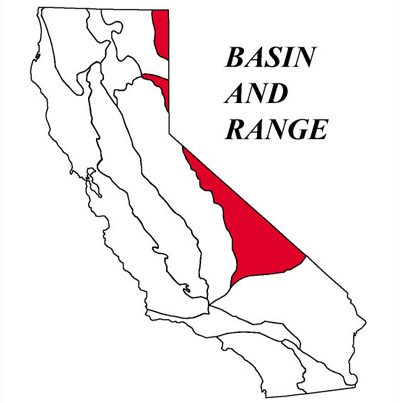

The Owens Valley lies within crust of the Basin and Range province, which is famous for its “horst and graben” structure. Consider the crust of the earth to be rifting apart: the surface breaks, and some blocks go down while others rise up. This process forms a pattern of highs and lows. Owens Valley is one of these low areas, known as a “graben,” while surrounding mountains are the high areas known as “horsts.” The elevation of the valley varies from about 3000 to 6000 feet and includes flat and gently sloping areas.
Erosion, the wearing away of rocks and soil by water and wind, and deposition combine in the process whereby these materials are laid down in new places. Through such continuous action, an alluvial fan—the fan-shaped deposit of soil and rocks at the base of the mountains—and a basin fill, or a layering of sediments on the floor of the valley, form over time.
Soil and Vegetation: Life on the Land
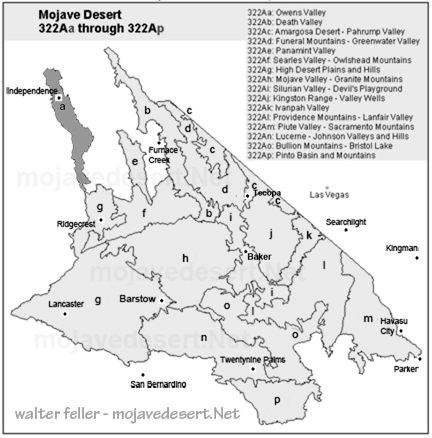
Soils in Owens Valley vary considerably. On the alluvial fans, Torrifluvents and Torriorthents soils are well drained and support a wide variety of plant life. Elsewhere in the basin-fill areas, the soils may be poorly drained and these areas may support different kinds of plants. There is even dune sand in places!
The vegetation of Owens Valley differs according to soil and location. You might find plants such as saltbush and greasewood that are tolerated on salty soils in the areas of basin fill. On the alluvial fans, there were plants like shadscale and hop-sage that could stand the drier conditions. Higher up on the fans, there is black bush with sagebrush. South of Owens Lake, creosote bush is the predominant plant.
Climate: Hot and Dry
Long-term temperatures and rainfall—Owens Valley has a hot and dry climate. Average annual precipitation, or the amount of rain that falls in an average year, is only about 4 to 8 inches. Most of this rain falls during the winter months. The mean annual temperature varies from 55° to 65° F. Because it is so dry, plants and animals must be tough in order to survive with little water.
Water: The Lifeline
Water plays a major role in the Owens Valley way of life. Along the middle of this long valley runs the Owens River, which furnishes water to many plants, animals, and people. Centuries ago, Owens Lake used to overflow periodically and send water to the neighboring valleys. Nowadays, so much of the Owens River water is exported to Los Angeles that Owens Lake is virtually dry.
Conclusion
Owens Valley is a place both fascinating in geology and ecology. Distinct landform, variety of soils, and flora hardiness testify to the ability of life to adapt to the rigors of heat and dryness. Understanding Owens Valley would help us recognize the sensitive links between land, water, plants, and animals that give this part of the world its special identity.
*AI
California to Salt Lake City
THE OVERLAND MAIL
1849-1869
Promoter of Settlement
Precursor of Railroads by
LE ROY R. HAFEN, PH.D .
Historian, The Stale Historical and Natural History Society of Colorado
The first United States mail between California and Salt Lake City was established in 1851. This route was advertised January 27, 1851, and the thirty-seven bids received ranged from $20,000 for “horseback or two horse coach service,” to $200,000 per year for service with ” 135 pack animals with 45 men, divided into three parties.” One bid was for a four-horse coach with a guard of six men, at $135,000 per year. The lowest bid was accepted and a contract was made in April with Absalom Woodward and George Chorpenning for a monthly service at $14,000 per year; the trip each way was to be made in thirty days. No points were designated at which the route should touch, but it was to go “by the then traveled trail, considered about 910 miles long.”
Chorpenning and his men left Sacramento May 1, 1851, with the first mail. They had great difficulty in reaching Carson valley, having had to beat down the snow with wooden mauls to open a trail for their animals over the Sierras. For sixteen days and nights they struggled through and camped upon deep snow. Upon reaching Carson valley, Chorpenning staked off in the usual western manner, a quarter section of land and arranged to establish a mail station. The town of Genoa, Nevada, grew-up on this site. Chorpenning and several men continued eastward and reached Salt Lake City June 5th, having been delayed somewhat by snow in the Goose Creek mountains.
Throughout the summer, difficulties were experienced with the Indians; and Woodward, who left Sacramento with the November mail, was killed by them just west of Malad River in northern Utah. The December and January mails from Sacramento were forced to return on account of deep snow, but the February (1852) mail was pushed through by way of the Feather River Pass and reached Salt Lake City in sixty days. The carriers endured frightful sufferings; owing to the fact that their horses were frozen to death in the Goose Creek mountains, they had to go the last two hundred miles to Salt Lake City on foot. Permission was obtained from the special agent in San Francisco to send the March mail down the coast to San Pedro and thence by the Cajon Pass and the Mormon trail to Salt Lake City. During the summer of 1852 the service continued to be performed across northern Nevada by way of the Humboldt River; but as winter approached, arrangements were made with the mail agent at San Francisco to carry the Utah mail via Los Angeles during the winter months. The Carson valley post office was supplied monthly by a carrier on snow-shoes. Fred Bishop and Dritt were the first carriers and they were succeeded by George Pierce and John A. Thompson. The latter, “Snowshoe Thompson,” a Norwegian by birth, made himself famous in this section by his feats on snow-shoes during succeeding winters. The shoes used were ten feet long and of the Canadian pattern. He often took one hundred pounds upon the journey between Placerville and Carson, and made the trip in three days to Placerville and the return journey in two days.
With the interruption by bad weather of the mail service east of Salt Lake City, the mail was sent westward to San Pedro, where it was transmitted by steamer to the Atlantic seaboard. This increased the weight of Chorpenning mail from about one hundred pounds to about five hundred pounds. For this additional service Chorpenning made claim and in 1857 received payment on a pro rata basis.
The causes of the irregularity and interruption of the mail service to Utah had not been explained to the Postmaster-general by the Special Agent at San Francisco and so, upon the grounds of the derangement of the service, the Postmaster-general annulled the contract with Chorpenning, and made one with W. L. Blanchard of California. The new contractor was to receive $50,000 per year, and was to maintain a fortified post at Carson valley. Upon learning of this new arrangement in January, 1853, Chorpenning set out for Washington and, after setting forth his case before the new Postmaster-general, was reinstated. A verbal agreement was made that the compensation should be increased to $30,000 per year and permission was given to carry the mails via San Pedro during the winter months.
During the first three years (1851-4) the Utah-California mail was carried except in winter, by the old emigrant route. This route lay from Sacramento
through Folsom, Placerville, along the old road through Strawberry and Hope valleys to Carson valley. From this point it led to the Humboldt, which stream
was followed nearly to its source. Leaving the Humboldt the route led northeastward into southern Idaho in the vicinity of the Goose Creek mountains, and thence southeasterly around the north side of Great Salt Lake to Salt Lake City.
In the lettings of 1854, the Utah-California mail route was changed to run from Salt Lake City over the Mormon trail to San Diego. Chorpenning was again the successful bidder. The mail was to be carried monthly each way, through in twenty-eight days, for a compensation of $12,500 per year. Chorpenning thought it worthwhile to enter a low bid to ensure getting the contract since he expected that the service would probably be increased to a weekly schedule, the time per trip reduced, and the compensation increased.
The service began July 1, 1854, and was to continue for four years. The mail was carried on horseback or on pack mules. During that first summer, Indian difficulties arose and continued at intervals for months. The emigration fell off and expenses on the route increased. Similar difficulties had been encountered by the contractors east of the Rocky Mountains, who appealed to Congress and received increased remuneration by the act of March 3, 1855. Encouraged by their success with Congress, and inasmuch as his difficulties continued, Chorpenning went to Washington and presented his claims in June, 1856. Congress responded with an act for his relief March 3, 1857. It provided that the compensation be increased to $30,000 per year from July 1, 1853, to the termination of the contract in 1858; that the full contract pay be allowed during the suspension of the contract in the spring of 1853; and that the Postmaster-general make an additional allowance on a pro rata basis for the extra service performed prior to 1853. A total of $109,072.95 was allowed and paid under the provisions of this act.
During the four years of the duration of the contract (until July i, 1858), the mail was carried with fair regularity, and often in less than schedule time. The service was usually performed on horseback, but a wagon was used occasionally. The mail of December, 1857, was taken from Salt Lake City to Los Angeles by wagon in twenty-six days, while on horseback the trip often did not consume more than twenty days.
Wells Fargo and Company, Adams and Company, and other express companies maintained express service on the line during this period (1854-8). There was also much freighting and some emigrant travel over the road. The Mormon “State of Deseret” had included the whole of this route with its terminus upon the Pacific Coast. A colony was planted by these pioneers at San Bernardino in 1851 and considerable trade and intercourse was carried-on over this road.
The route was in general that of the present “Arrowhead Trail” automobile road. From Los Angeles the route led to San Bernardino, through Cajon Pass to the Mohave River, which was followed for fifty miles. From the Mohave River the route lay to the north to Bitter Springs, then turned eastward by Kingston Springs to Las Vegas, Nevada. From this famous resting station a dry stretch of sixty miles was crossed leading to the Muddy Creek. After crossing another “bench” the Virgin River was reached, and this stream was followed to Beaver Dams, Arizona. Leaving the Virgin River the road crossed the “slope” and over a little mountain range to the Santa Clara Creek, which stream was followed to the vicinity of the famous Mountain Meadows. From Mountain Meadows the route led to Cedar City and thence almost due north through the Mormon settlements of Parowan, Beaver, Fillmore, Nephi, Payson, Provo, and Lehi to Salt Lake City.”
Before the termination of the contract on this route the policy of extensive increases in the western mail lines was inaugurated, and partisans of the “Central Route” via Salt Lake City and across northern Nevada were demanding service upon that more direct route to San Francisco. Accordingly, in 1858 this Los Angeles to-Salt Lake City route was discontinued and the original route of 1851 was re-established and put upon an improved basis.
–
Why is there Snow?
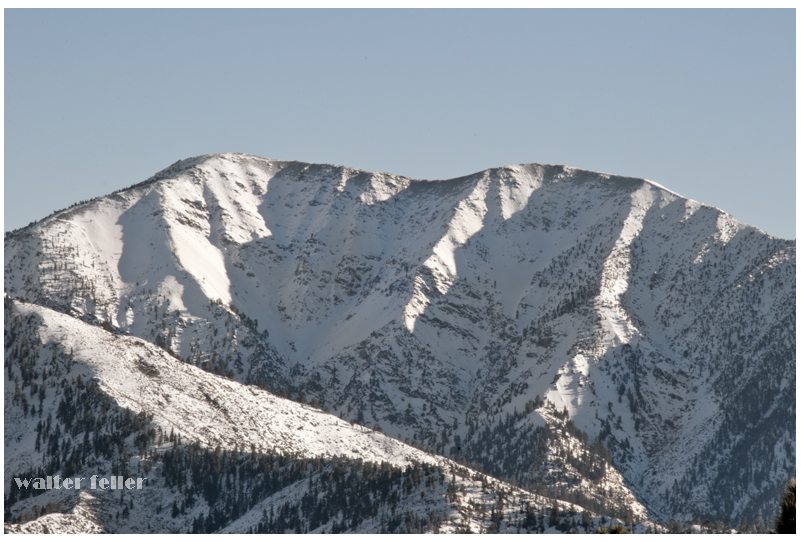
Snow is one of nature’s most captivating occurrences, turning landscapes into winter wonderlands. Have you ever wondered why snowfall occurs? Let’s discover the icy world of snow and understand how it forms.
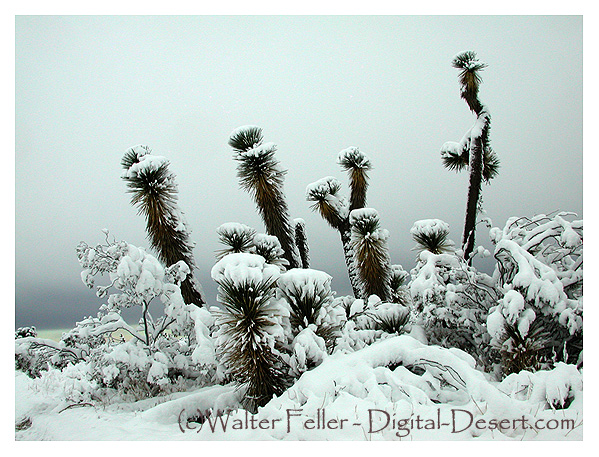
It must be Cold
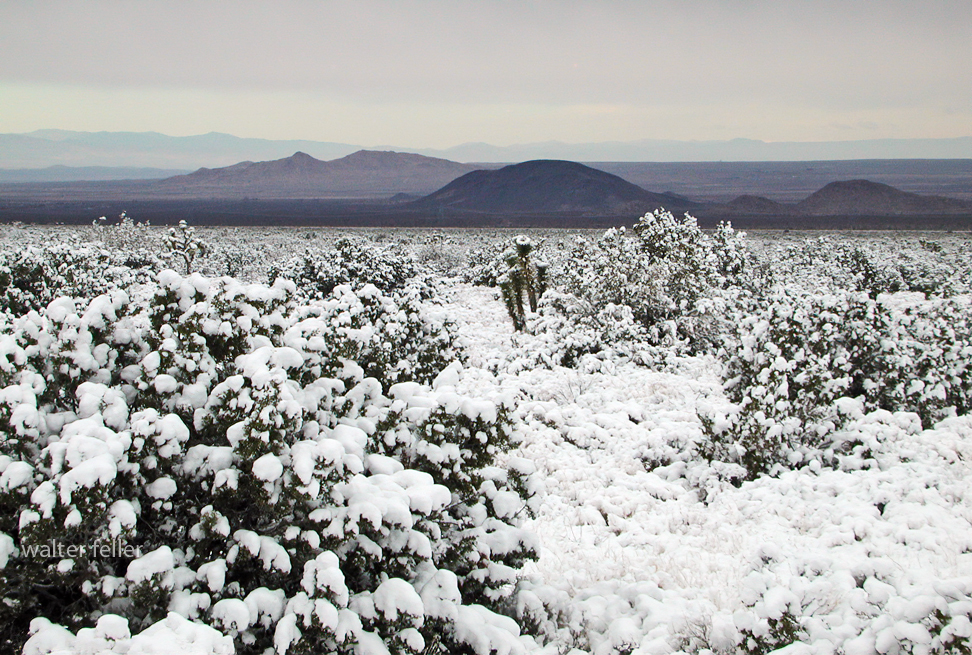
In order for snow to form, the temperature needs to be cold, particularly below freezing (32°F or 0°C). When the atmosphere freezes, moisture can change into ice without going through the liquid stage. The process of making snow starts with this important initial stage. Cold temperatures act like a natural freezer, providing the right environment for water to transform into ice crystals.
Humidity in the Atmosphere
Despite being invisible, water vapor is constantly present in the air. The moisture originates from lakes, oceans, rivers, and even plants. As moist air rises into the atmosphere, it loses heat and becomes cooler. The reduced ability of colder air to hold water vapor causes the vapor to condense into tiny droplets, eventually forming clouds.
Cloud formation
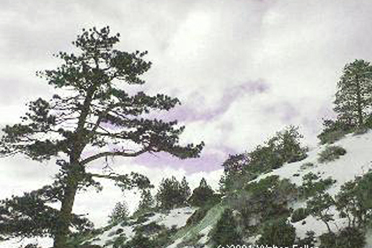
Clouds are primarily made up of tiny water droplets or ice particles. When the air temperature cools enough within these clouds, the water droplets freeze and change into ice crystals, forming the basis of snowflakes. Ice crystals in clouds collide, stick together, and grow in size, forming intricate snowflake patterns.
When Snowflakes Fall

When the snowflakes become thick, they start falling from the clouds. While descending, they pass through different layers of the atmosphere. If the temperature by the surface is freezing, the snowflakes stay whole and fall as snow. If the temperature is warmer near the surface, snowflakes may melt and change into rain or sleet before reaching the ground.
Snow
Different forms of snow can occur based on the temperature and moisture content in the atmosphere. During extreme cold, snow becomes light and airy, ideal for creating snow angels and skiing. When the temperature gets closer to freezing, the snow becomes more moist and dense, perfect for making snowmen and having snowball fights.
Summary
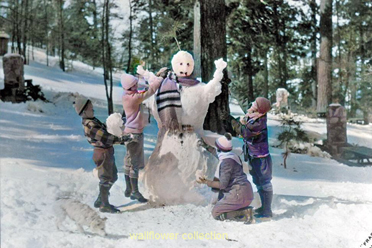
Snow is an intriguing outcome of low temperatures, moisture, and cloud movements. It starts with chilled air turning water vapor into ice crystals. The snowflakes are made of crystals, creating a white blanket when they fall to the ground. Snow creates happiness and thrill, transforming the world into a winter wonderland of leisure pursuits. The next time you witness snowflakes descending, remember nature’s process of mixing cold and moisture to form a magical winter scene!
Four reasons Joshua trees may branch:
The Joshua tree, scientifically known as Yucca brevifolia, has a unique branching pattern influenced by several factors:

1. Flowering: When a Joshua tree blooms, it pauses the growth of its main stem, forming new branches. Each bloom cycle can produce more branches, contributing to its distinct shape.
/blog/yucca-moths-and-joshua-trees-a-mutualistic-relationship/
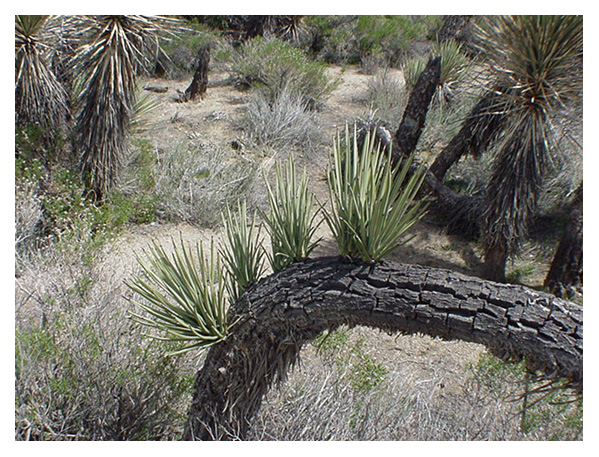
2. Damage Response: Trees can branch out in response to physical damage from storms, animals, or human activity. This is a survival mechanism that ensures they continue growing despite injuries.
3. Hormonal Influences: Growth hormones within the tree, like auxins, play a role in branch development. These hormonal changes can trigger the growth of new shoots and branches.
4. Environmental Conditions: Soil quality, water availability, and sunlight can also affect how and when a Joshua tree branches. Trees in optimal conditions may branch more frequently.
These combined factors give the Joshua tree its iconic, spiky silhouette, making it a distinctive feature of the Mojave Desert landscape.
The photo in this post shows branching as a damage response #2
Yucca Moths and Joshua Trees: A Mutualistic Relationship

https://mojavedesert.net/trees/yucca-brevifolia
Introduction The relationship between Joshua trees (Yucca brevifolia) and yucca moths (Tegeticula synthetica) is a classic example of mutualism, where both species benefit from their interaction. This symbiotic relationship is essential for the reproduction of Joshua trees and the lifecycle of yucca moths.
Yucca Moth Pollination Process
- Flowering: Joshua trees typically bloom from February to late April, producing clusters of creamy white to green flowers. The blooming process depends on sufficient rainfall and a winter freeze.
- Moth Activity: Female yucca moths visit Joshua tree flowers during their active period. Unlike most insects that visit flowers for nectar, yucca moths have a unique role. The female moth collects pollen from the anthers of one flower and forms it into a ball using specialized tentacles near her mouth.
- Pollination: The moth deliberately transfers the pollen ball to the stigma of another Joshua tree flower. This deliberate act ensures cross-pollination, which is crucial for the genetic diversity and reproductive success of the Joshua tree.
- Egg Laying: After pollinating the flower, the female moth lays her eggs inside the flower’s ovary. This ensures that her larvae will have a food source when they hatch.
- Larval Feeding: As the seeds develop within the flower’s ovary, the moth eggs hatch into larvae. These larvae feed on a portion of the developing seeds. Despite this seed predation, enough seeds typically remain viable to ensure successful reproduction of the Joshua tree.
Selective Abortion Joshua trees have developed a mechanism to ensure seed survival despite the larvae feeding. They can selectively abort ovaries that contain too many moth eggs. This limits the number of larvae that can develop and ensures that sufficient seeds remain viable for the tree’s reproduction.
Mutual Benefits
- For the Joshua Tree: The deliberate pollination by the yucca moth increases the likelihood of successful seed set and promotes genetic diversity due to cross-pollination.
- For the Yucca Moth: The Joshua tree provides a secure environment for the moth to lay its eggs and a reliable food source for the larvae.
Unique Adaptations
- Yucca Moth: Specialized tentacles for collecting and transferring pollen. This adaptation is unique among insects and has specifically evolved to pollinate Joshua trees.
- Joshua Tree: Flower structure that accommodates the yucca moth’s pollination behavior. The tree’s ability to selectively abort seed pods with too many larvae is also a crucial adaptation for managing seed predation.
Ecological Importance The relationship between Joshua trees and yucca moths is a cornerstone of the Mojave Desert ecosystem. This mutualism ensures the reproduction and survival of Joshua trees and supports a complex web of life, providing food and habitat for various species of birds, mammals, reptiles, and insects.
Conclusion The intricate pollination mechanism between Joshua trees and yucca moths highlights these species’ deep co-evolution and interdependence. This mutualistic relationship is essential for their survival and plays a vital role in maintaining the ecological balance of the Mojave Desert.
The Evolution of Muroc: From Desert Wasteland to Aviation and Racing Hub
Geological and Environmental Background
Pleistocene Era (circa 2.5 million years ago) The origins of Rogers Dry Lake, located in the Antelope Valley within the Mojave Desert, trace back to the Pleistocene Era, around 2.5 million years ago. As a pluvial lake, it boasts an incredibly flat, smooth, and hard surface, which can withstand pressures up to 250 psi. These unique geological characteristics made Rogers Dry Lake a natural choice for aviation and automotive speed trials. Covering approximately 65 square miles, the lakebed forms a rough figure eight and is known for its harsh climate, experiencing extreme temperatures, violent dust storms, and mesmerizing sunsets.
Early Settlement and Development
Pre-1876: Sparse Population and Railroad Expansion Before significant settlement, the area was primarily inhabited by occasional prospectors searching for mineral wealth. The Southern Pacific Railroad established a water stop near the lakebed in 1876. In 1882, the Santa Fe Railroad extended westward from Barstow toward Mojave, establishing another water stop at the edge of what was then called Rodriguez Dry Lake. By the early 1900s, the name “Rodriguez” had been anglicized to “Rogers.”
1910: The Corum Family and the Founding of Muroc In 1910, the Corum family settled at the lakebed, naming the area “Muroc” by reversing their last name after their original choice, “Corum,” was rejected due to its similarity to “Coram, California.” The Corum family established a general store and post office, attracting other homesteaders and helping to develop the area. Their efforts laid the foundation for what would become a significant site in both aviation and automotive history.
Early Racing Events
1920s: The Dawn of Speed Events Muroc Dry Lake became a prominent site for American Automobile Association (AAA) sanctioned speed events during the 1920s. The affordability and modifiability of the Model T made it the preferred vehicle for early hot rodders. Roadsters were favored among racers, but touring cars were also frequently raced. In May 1923, Joe Nikrent set a speed record of 108.24 miles per hour in a stripped-down Buick. The following year, Tommy Milton achieved 151.26 mph in a Miller-powered race car. In 1927, Frank Lockhart reached a speed of 171 miles per hour, further cementing Muroc’s reputation as a premier racing venue.
October 9, 1927: Southern California Champion Sweepstakes One of the most significant early racing events was the Southern California Champion Sweepstakes, held on October 9, 1927. Organized by Earl Mansell from Pasadena, California, the event featured five classes of competition:
- Ford Roadsters: Open to any Ford roadster with or without fenders or windshields, requiring a hood and turtle deck.
- Ford Coupes: Required fenders, hood, windshield, and doors.
- Ford Touring Cars: Fenders and windshields were optional.
- Special Flathead Race: Open to any body style with a flathead engine, offering refunded entry fees to winners of the previous events.
- Championship Sweepstakes: Open to any roadster, coupe, or touring car, with the option to race without windshield or fenders.
Organized Racing and the SCTA
1931: The First Organized Speed Trials In 1931, one of the first known organized amateur speed trials took place at Muroc, sponsored by Gilmore Oil Company of Los Angeles and organized by George Wight, owner of Bell Auto Parts. Recognizing the need for coordinated rules and regulations, Wight invited hot rodders to an organizational meeting in East Los Angeles. Early rules categorized cars based on engine types, including Model T flatheads, Model T Rajos, Model T Frontenacs and Chevrolets, Model A flatheads, and Model A overhead valve conversions. Supercharged cars were not allowed to compete. The first organized meet was held on March 25, 1931, followed by another on April 19, 1931. Safety measures were implemented, such as a 40 mph speed limit for returning cars and penalties for jumping the start.
Formation of the Muroc Racing Association By the end of 1931, the Muroc Racing Association was formed, complete with officers and a race program. The association collected a one-dollar entry fee to cover expenses, and the Purdy Brothers developed an electrical timer to clock the cars’ speeds, further formalizing the events.
1932-1933: Changes in Classification In 1932, the trials continued under the same rules, but significant changes in car classification were introduced. Cars were now categorized as either stock-bodied or modified. Stock-bodied cars could have certain parts removed, while modified cars were significantly altered. Between the 1932 and 1933 seasons, classifications shifted to speed and body type, with new classes based on potential top speeds. This change aimed to ensure fairness and safety, with measures like painting speedometers with white shoe polish to prevent drivers from knowing their exact speed.
Military Establishment and World War II
September 1933: The Arrival of the Army In 1933, the United States Army arrived at Muroc, recognizing the lakebed’s potential as an airfield. The Muroc Bombing and Gunnery Range was established, and by 1937, the United States Army Air Corps set up Muroc Air Field for training and testing purposes.
World War II and the Establishment of Muroc Army Air Base During World War II, Muroc Army Air Base was activated, serving as a major training site for bomber crews and fighter pilots. The flat, hard surface of Rogers Dry Lake was ideal for aircraft testing, including early jet planes like the Bell XP-59A and the Lockheed XP-80. On October 1, 1942, the Bell XP-59A Airacomet, America’s first jet plane, made its first flight at Muroc. The base played a crucial role in the war effort, training crews and testing new aircraft.
Post-War Developments After the war, Muroc continued to be a central hub for aviation research and development. The Bell X-1, piloted by Capt. Charles E. “Chuck” Yeager, broke the sound barrier on October 14, 1947, marking a significant milestone in aviation history. The base was renamed Edwards Air Force Base in February 1948 in honor of Capt. Glen W. Edwards, who died in a test flight accident. By 1950, Edwards Air Force Base was officially dedicated and recognized as the U.S. Air Force Flight Test Center (AFFTC).
The Hot Rodding Era
Post-War Racing and El Mirage The end of World War II marked a transition from racing activities at Muroc to El Mirage, another dry lakebed south of the air base. While El Mirage was not as ideal as Muroc, it continued to host hot rodding events. The SCTA (Southern California Timing Association) organized several “reunion” races at Muroc in 1995, bringing together a generation of racers who had participated in early SCTA events. However, racing activities at Muroc were halted following the events of September 11, 2001, due to security concerns.
Legacy and Continued Significance
Aviation and Hot Rodding Heritage Muroc’s dual legacy as a pioneering site for both aviation and hot rodding remains significant. Edwards Air Force Base continues to be a premier flight testing center, contributing to numerous advancements in aerospace technology. Meanwhile, the early days of hot rodding at Muroc are fondly remembered by enthusiasts and are considered a foundational period in the history of American motorsports.
Current Status and Future Prospects While racing activities at Muroc have ceased, El Mirage remains an active site for hot rodding events. The SCTA continues to organize races, preserving the spirit and tradition of early speed trials. There is hope that, in the future, Muroc might once again host racing events, allowing the sands to echo with the sounds of high-speed automotive competition.
In conclusion, Muroc’s history is a testament to its unique geographical features and its adaptability, serving as a critical site for both military aviation and automotive racing. The integration of these diverse historical elements highlights Muroc’s significant contribution to American technological and cultural heritage.